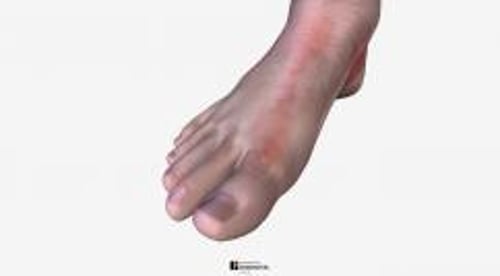Lymphangitis is infection of one or more lymphatic vessels, usually caused by streptococci.
Topic Resources
(See also Overview of Bacterial Skin Infections.)
Lymph is a fluid that oozes out of the body's tiniest blood vessels and is part of the body’s immune system. The fluid goes between cells and brings nourishment and carries away substances such as damaged cells, cancer cells, and infectious microorganisms. All lymph passes through lymphatic vessels to strategically placed lymph nodes. Lymph nodes and specialized white blood cells in lymph nodes work to remove these substances and foreign particles from the body. (See figure Lymphatic System: Helping Defend Against Infection.)
Streptococci bacteria can enter the lymphatic vessels, usually through a scrape or wound in an arm or a leg. Often, a streptococcal infection in the skin and the tissues just beneath the skin (cellulitis) spreads to the lymph vessels. Rarely, staphylococci or other bacteria are the cause.
Symptoms of Lymphangitis
Red, irregular, warm, tender streaks develop on the skin in the affected arm or leg. The streaks usually stretch from the infected area toward a group of lymph nodes, such as those in the groin or armpit. The lymph nodes become enlarged and feel tender (see Lymphadenitis).
Common symptoms of lymphangitis include a fever, shaking chills, a rapid heart rate, and a headache. Sometimes these symptoms occur before the red streaks appear. The spread of the infection from the lymph system into the bloodstream (bacteremia) may cause infection throughout the body, often with startling speed.
Diagnosis of Lymphangitis
A doctor's evaluation
The diagnosis of lymphangitis is based on its typical appearance.
If needed, a blood test usually shows that the number of white blood cells has increased to fight the infection.
Doctors have difficulty identifying the organisms causing the infection unless the organisms have spread to the bloodstream and can be cultured or pus can be taken from a wound in the affected area and cultured.
Treatment of Lymphangitis
Antibiotics
Most people recover quickly with antibiotics.


